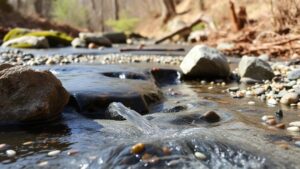How to Calculate the Volume of Spoil From Blasting Operations
How to Calculate the Volume of Spoil From Blasting Operations
In mining and construction, blasting operations are essential for breaking rock and facilitating excavation. But, the resulting material, often referred to as spoil, needs to be accurately measured to assess the effectiveness of the blasting process and to plan for subsequent operations. Calculating the volume of spoil involves understanding several factors, including the type of rock, the density of the blasted material, and the dimensions of the blast site.
Understanding Spoil and Its Characteristics
Spoil, or the debris produced from blasting operations, can vary significantly in terms of size, density, and composition. Understanding these characteristics is crucial for volume calculations. The spoils characteristics can be influenced by:
- The type of rock being blasted (e.g., granite, limestone, etc.)
- The energy used in the blast (i.e., the amount of explosives)
- The geological conditions at the site
For example, blasting granite requires more energy compared to softer rocks like limestone. As a result, this will affect the spoils fracturing and, in turn, the volume produced.
Basic Calculation Methods
Calculating the volume of spoil can be approached using various methods, depending on the available data and the resources at hand. Two common methods are:
- Direct Measurement: This involves physically measuring the dimensions of the spoil pile and applying basic geometric formulas.
- Volume Estimation from Pre-blast Surveys: This involves using geological surveys and data collected before blasting to estimate expected volumes.
Direct Measurement Method
For the direct measurement method, the volume calculation can be simplified using geometric shapes. Heres a breakdown of the process:
- Determine the shape of the spoil pile (e.g., pyramidal, conical, or cylindrical).
- Measure the relevant dimensions required for volume calculations, such as height and radius.
- Apply the appropriate volume formula. For example:
- Pyramid: V = (1/3) × Base Area × Height
- Cylinder: V = π × Radius² × Height
As an illustration, if a spoil pile has a conical shape with a radius of 3 meters and a height of 5 meters, the volume (V) can be calculated as follows:
V = (1/3) × π × (3 m)² × (5 m) = 47.12 m³
Volume Estimation from Pre-Blast Surveys
In some instances, the volume of spoil can be predicted using pre-blast geological studies. Data points may include:
- Drill hole data
- Rock density estimates
- Historical data from previous blasts
By analyzing this data, professionals can create models that predict the volume of spoil. For example, if a previous blast produced an average of 40 cubic meters per metric ton of rock, this could be used to potentially estimate spoil volume based on the tonnage of rock expected to be blasted.
Considerations for Accurate Volume Calculations
While calculating spoil volume is essential, several factors must be considered for precision:
- Density Variation: The density of spoil can change based on fragmentation and moisture content.
- Weather Conditions: Rain, wind, and other weather conditions can alter the spoil pile, making it difficult to measure.
- Settlement: Over time, spoil may settle or compact, impacting volume.
Real-World Applications
Understanding the volume of spoil is not only vital for cost estimation and project planning but also for environmental compliance. For example, in a recent mining operation in Nevada, accurate spoil volume calculations allowed the company to minimize land disruption and optimize waste management practices, ultimately saving time and resources.
Conclusion
Calculating the volume of spoil from blasting operations is a critical task that can significantly impact project efficiency and environmental sustainability. By employing methods such as direct measurement or volume estimation and taking into account the various influencing factors, professionals can achieve accurate results. With this knowledge, operations can proceed with better planning, reduced costs, and fewer environmental impacts.
Actionable Takeaways
- Familiarize yourself with different spoil measuring techniques.
- Use pre-blast surveys for better volume predictions.
- Consider the geological and environmental factors that influence spoil characteristics.
